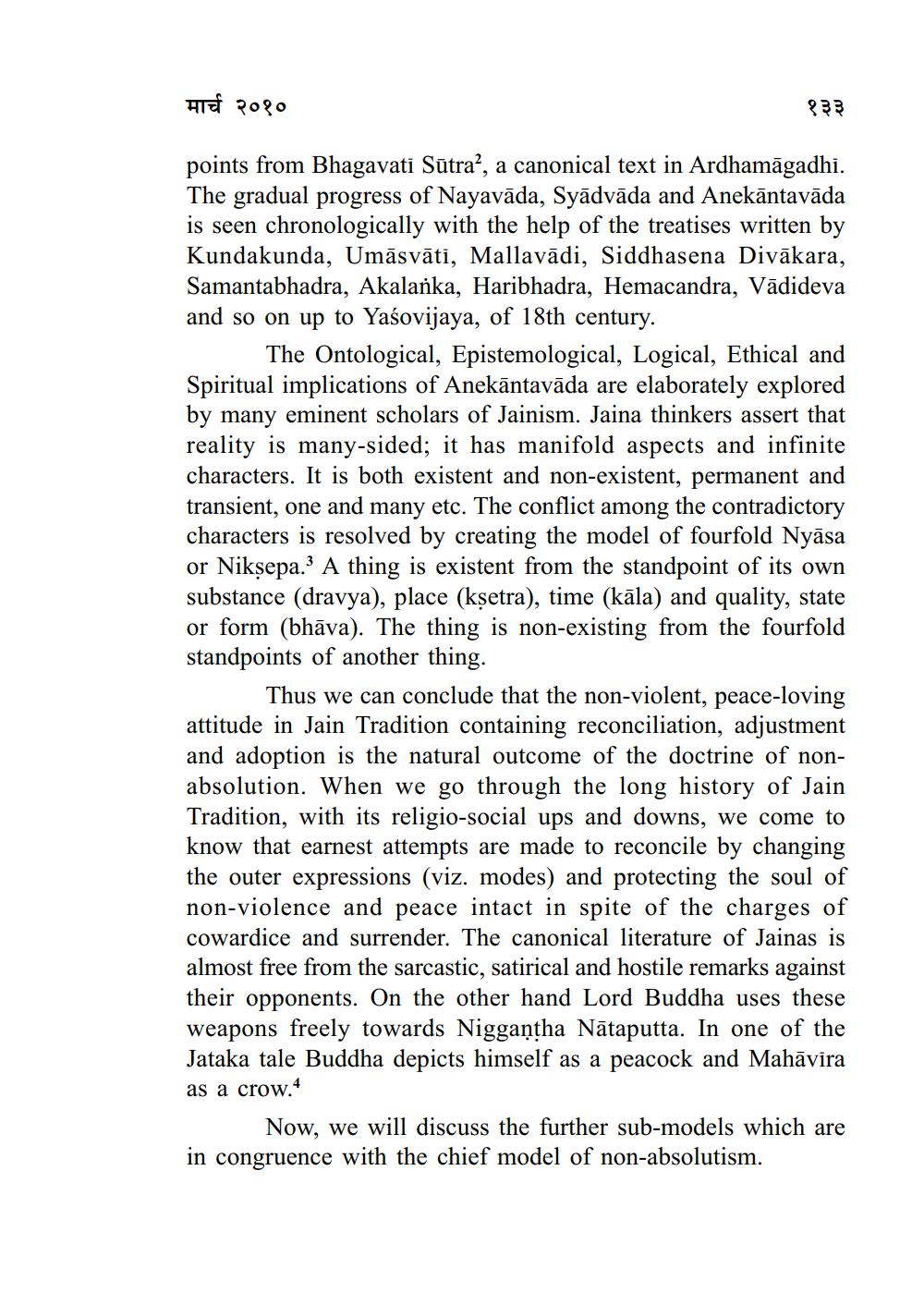Book Title: Models of Conflict Resolution and Peace in Jain Tradition Author(s): Nalini Joshi Publisher: ZZ_Anusandhan View full book textPage 3
________________ मार्च २०१० १३३ points from Bhagavati Sūtra’, a canonical text in Ardhamāgadhi. The gradual progress of Nayavāda, Syādvāda and Anekāntavāda is seen chronologically with the help of the treatises written by Kundakunda, Umāsvāti, Mallavādi, Siddhasena Divākara, Samantabhadra, Akalanka, Haribhadra, Hemacandra, Vādideva and so on up to Yaśovijaya, of 18th century The Ontological, Epistemological, Logical, Ethical and Spiritual implications of Anekāntavāda are elaborately explored by many eminent scholars of Jainism. Jaina thinkers assert that reality is many-sided; it has manifold aspects and infinite characters. It is both existent and non-existent, permanent and transient, one and many etc. The conflict among the contradictory characters is resolved by creating the model of fourfold Nyāsa or Nikṣepa.A thing is existent from the standpoint of its own substance (dravya), place (kşetra), time (kāla) and quality, state or form (bhāva). The thing is non-existing from the fourfold standpoints of another thing. Thus we can conclude that the non-violent, peace-loving attitude in Jain Tradition containing reconciliation, adjustment and adoption is the natural outcome of the doctrine of nonabsolution. When we go through the long history of Jain Tradition, with its religio-social ups and downs, we come to know that earnest attempts are made to reconcile by changing the outer expressions (viz. modes) and protecting the soul of non-violence and peace intact in spite of the charges of cowardice and surrender. The canonical literature of Jainas is almost free from the sarcastic, satirical and hostile remarks against their opponents. On the other hand Lord Buddha uses these weapons freely towards Niggaộtha Nātaputta. In one of the Jataka tale Buddha depicts himself as a peacock and Mahāvīra as a crow.4 Now, we will discuss the further sub-models which are in congruence with the chief model of non-absolutism.Page Navigation
1 2 3 4 5 6 7 8 9 10 11 12 13
